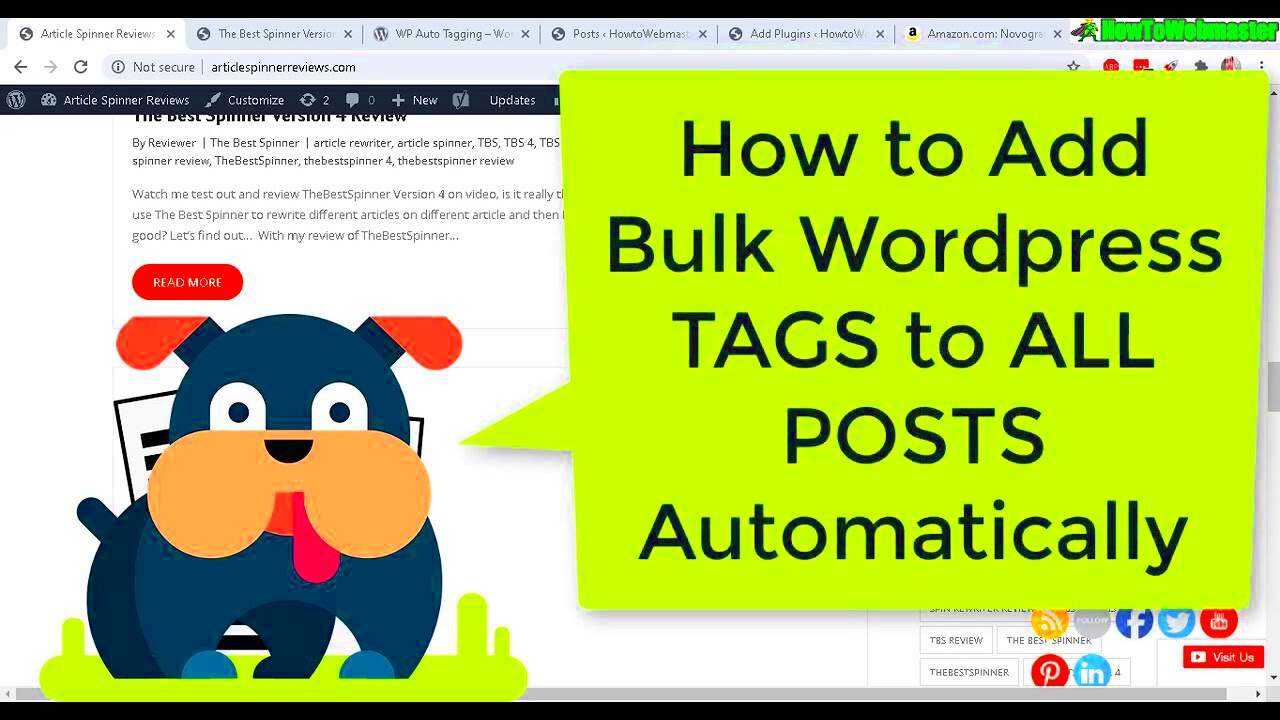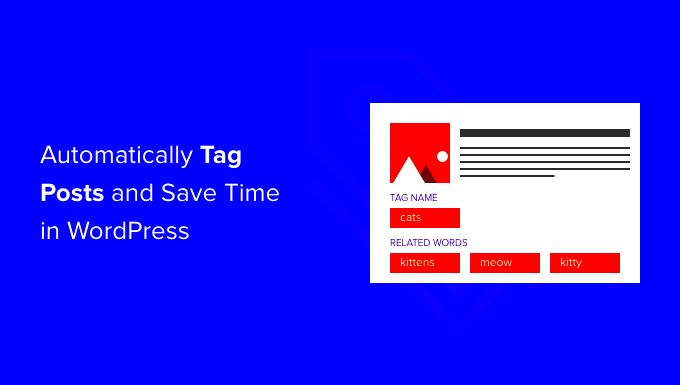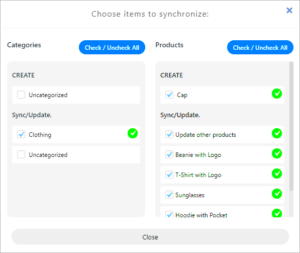Have you ever found yourself spending more time tagging your WordPress posts than actually writing them? If so, you’re not alone! Automatic tag generation is a game-changer for bloggers and content creators alike. This innovative feature saves you precious time and ensures your posts are well-organized, improving visibility and engagement. With the help of WordPress plugins, you can streamline your tagging process and focus on what you do best—creating fantastic content.
The Importance of Tags in WordPress

Tags might seem like a minor detail in the grand scheme of your blog, but they hold a lot of power when it comes to enhancing user experience and boosting SEO. Let’s unpack why tags are crucial:
- Improved Navigation: Tags help categorize your content. When users click on a tag, they can quickly access all posts related to that topic, making it easier to find relevant information.
- SEO Benefits: Search engines use tags as keywords to understand the content of your posts. Well-chosen tags can improve your site’s visibility in search results.
- Better Content Organization: Tags make your blog look more organized and professional. This helps in establishing your blog’s niche and theme.
- Increased Engagement: When readers find related content through tags, they are more likely to stay on your site longer, increasing page views and reducing bounce rates.
Here’s a simple table summarizing the benefits of using tags:
| Benefit | Description |
|---|---|
| Navigation | Helps users find related posts quickly. |
| SEO | Improves search engine ranking by signaling content relevance. |
| Organization | Keeps your blog tidy and helps establish its focus. |
| Engagement | Encourages longer visits and reduces bounce rates. |
In summary, utilizing tags effectively can dramatically enhance the overall experience of your blog, making automatic tag generation a smart choice for any WordPress user!
Overview of Available WordPress Plugins for Tag Generation

When it comes to automating the tagging process for your WordPress posts, there are several plugins that can help you out. These plugins not only save you time but also enhance the SEO of your content by ensuring that your posts are appropriately tagged. Here’s a look at some popular options available:
- Simple Tags:
This plugin does a great job at automatically suggesting tags for your posts based on content. You can also use it for tag management, including merging, removing, or even creating tags.
- TaxoPress:
A versatile plugin that helps manage all of your taxonomies, TaxoPress allows for automatic tag generation based on your criteria. It’s perfect for custom taxonomies and has a user-friendly interface.
- Automatic Post Tagger:
As the name suggests, this plugin automatically adds relevant tags to your posts based on keywords you define. It’s simple to set up, making it a good choice for beginners.
- WP Auto Tagger:
This plugin uses an external API to analyze your content and generate relevant tags automatically. It’s effective for content that covers various topics and ensures comprehensive tagging.
As you can see, there’s a plugin for every type of user, whether you want something simple or advanced. Each of these can add immense value by streamlining your tagging process and optimizing your posts for search engines!
Step-by-Step Guide to Installing a Tag Generation Plugin

Installing a tag generation plugin on your WordPress site is a breeze! Follow these simple steps to get started:
- Log into your WordPress Admin Dashboard:
Enter your credentials to access the backend of your website.
- Navigate to Plugins:
On the left-hand side menu, click on Plugins, then select Add New.
- Search for a Tag Generation Plugin:
Use the search bar on the top right to look for plugins such as Simple Tags, TaxoPress, or whichever plugin you opted to use.
- Install the Plugin:
Once you find the desired plugin, click on the Install Now button. After the installation is complete, you’ll see an Activate button. Click on it to enable the plugin.
- Configure Plugin Settings:
After activation, you can usually find the plugin settings in the Settings menu or in your dashboard sidebar. Customize the settings according to your needs for tag generation.
- Create or Edit a Post:
Now that your plugin is operational, create a new post or edit an existing one, and watch as the tags are automatically generated based on your content!
And voila! You now have a powerful tool to help you automate the tagging of your WordPress posts. Enjoy more time creating content and less time worrying about tags!
5. Configuring the Plugin Settings for Optimal Tag Creation
When it comes to ensuring that your WordPress plugin for auto-generating tags works at its best, diving into the configuration settings is essential. This is where the magic happens and where you can tweak features for optimal results. Let’s break down the essentials for configuring your plugin:
- Accessing Settings: First, navigate to the plugin settings area. You can usually find this in your WordPress dashboard under the “Plugins” section. Look for the specific plugin you’re using and click on its settings link.
- Tag Generation Criteria: Most plugins allow you to define how tags are generated. For instance, do you want them based on post content, titles, categories, or a combination of these? Adjust these criteria according to your content strategy.
- Max Tags Limit: It’s crucial to set a maximum limit for the number of tags generated. A good rule of thumb is anywhere between 5 and 10 tags per post. This keeps your tags relevant and manageable.
- Relevancy Scoring: Take a closer look if your plugin has options for scoring relevancy. Some plugins assess how relevant a tag is to your content, boosting the efficiency of the tags created. Keep this feature active to enhance quality.
- Exclusion Lists: Make use of the exclusion feature. If there are specific words or phrases that you don’t want tagged, add them to your exclusion list. This helps maintain the focus of your tags.
- SEO Settings: Lastly, verify if your plugin offers SEO settings. Tools like these can help integrate your tags better with your overall SEO strategy, ensuring they help improve your site’s visibility.
By carefully adjusting these settings, you’ll maximize the effectiveness of your auto-generated tags, leading to a well-organized and SEO-friendly environment for your content.
6. How to Use Generated Tags Effectively
So, your WordPress plugin is cranking out those tags automatically—great! But just generating tags isn’t enough. You need to use them effectively to truly reap the benefits. Here are some simple yet effective ways to make the most of your generated tags:
- Organize Content: Use tags as a way to categorize your content. By applying relevant tags, you create a clear structure that makes it easier for both users and search engines to navigate your site.
- Enhance User Experience: Tags can serve as a navigation tool. When readers click on a tag, they should be directed to a curated list of related articles. This keeps them engaged and encourages them to explore more content on your site.
- Improve SEO: Don’t underestimate the power of tags in SEO. Search engines use tags to understand the content structure, so carefully chosen, relevant tags can boost your site’s visibility in search results.
- Regularly Review Tags: Periodically, go through your tags and see if they still make sense. Tags can become outdated or irrelevant as your blog evolves. Don’t hesitate to refine, update, or delete tags that no longer serve a purpose.
Lastly, remember not to overload your posts with too many tags. Stick to a handful of highly relevant tags for each post. This not only looks cleaner but also aligns more favorably with SEO best practices. By following these tips, you’ll ensure that your auto-generated tags add value to your blog, improving both user experience and SEO performance.
Common Issues and Troubleshooting Tips
When diving into the world of automatically generating tags for your WordPress posts, it’s not uncommon to run into a few bumps along the road. But fear not! Most issues have straightforward solutions. Here’s a look at some common problems you might encounter and tips to troubleshoot them effectively:
- Plugin Compatibility: Sometimes odd behaviors arise when your tagging plugin clashes with other plugins or themes. If you notice tags aren’t generating as they should, try deactivating other plugins one by one to see if there’s a conflict.
- Insufficient Permissions: Ensure that your user role has the permissions needed to use the plugin. If you’re not the admin, consult your website administrator to verify your access rights.
- Tag Generation Settings: It’s crucial to dive into the plugin settings. Have you configured the tagging rules properly? If automatic tags don’t match your posts well, revisit the settings to fine-tune your criteria.
- Caching Issues: Sometimes, caching plugins can interfere with real-time processes. Clear your website cache after making changes to the tagging settings to see updated results.
- Outdated Plugin Version: Regularly check for updates. An outdated plugin can lead to errors or even failure to function altogether. Keeping your plugins up to date is essential for seamless performance.
- Server Limitations: On occasions, server restrictions might prevent certain operations of the plugin. If you suspect this is the case, contact your hosting provider for assistance.
By keeping these troubleshooting tips in mind, you’ll be better prepared to identify and resolve issues quickly, ensuring a smooth tagging experience on your WordPress site.
Conclusion: Enhancing Your WordPress Workflow with Auto-Generated Tags
In the fast-paced digital environment where content is king, streamline your workflow becomes essential. One of the most effective ways to achieve this is by leveraging plugins that automatically generate tags for your posts. It’s not just about convenience; it’s about boosting your SEO and improving user experience.
- Time-Saving: Automatically generated tags save your time, letting you focus on content creation rather than tedious tagging tasks.
- Improved SEO: Properly tagged posts can significantly enhance your visibility on search engines, driving more traffic to your site.
- Consistency: Automated systems provide a uniform method of tagging, ensuring that all posts follow the same structure and guidelines.
- User Experience: Effective tagging enables better navigation within your site, helping users find related content effortlessly.
By incorporating automatic tagging into your WordPress strategy, you free up resources to concentrate on producing quality content while maintaining a high standard of organization and accessibility. It’s a win-win situation that ultimately leads to a thriving online presence. So why not dive in and enhance your WordPress workflow today? Your future self will thank you!
Additional Resources and Recommendations
When it comes to enhancing your WordPress site with automated functionality, especially for generating tags, several resources and recommendations can significantly improve your experience. Here are some valuable tools and materials to consider:
- WordPress Plugin Repository: Always start by exploring the official WordPress Plugin Repository. Look for plugins like Simple Tags or Auto Tagger, which can help streamline the tagging process.
- Documentation and Tutorials: Check out the documentation provided by plugin developers. Many plugins have comprehensive guides and tutorials to help you set them up correctly.
- SEO Best Practices: Implementing tags is part of a broader SEO strategy. Resources like Moz’s Beginner’s Guide to SEO offer great insights into effective tagging and overall SEO practices.
- Forums and Community Groups: Engage with the WordPress community through forums and groups. Websites like WordPress Support Forums can be helpful to get advice and solutions from experienced users.
- YouTube Tutorials: Video content can provide visual guidance. Search for WordPress tagging tutorials on platforms like YouTube for step-by-step demonstrations.
Recommended Plugins for Tag Generation
| Plugin Name | Features | Price |
|---|---|---|
| Simple Tags | Auto-generate tags, tag cloud, integration with scripts | Free |
| Auto Tagger | Automatic tagging based on post content | $30 (one-time fee) |
By utilizing these resources and recommendations, you can enhance your WordPress site’s tagging capabilities and improve its overall visibility and functionality.



